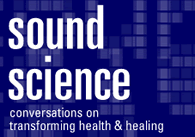News Release: Research, School of Medicine
Dec. 8, 2008
Emory Sound Science Podcast: A Dynamic Diagnostic Toolbox for Cardiac Care

Twenty years ago, Ernest Garcia, PhD, and his colleagues created software that helped physicians analyze cardiac images. Today the software is used throughout the world and has evolved into a vast set of software-imaging tools. Known as the Emory Cardiac Toolbox, the software provides physicians with an efficient, noninvasive method of accurately diagnosing heart disease.
To listen to Garcia’s own words about using sophisticated software tools to diagnose heart disease, access Emory's new Sound Science podcast at http://whsc.emory.edu/soundscience/
Garcia, a professor of radiology at Emory University School of Medicine, says the most fundamental question the software addresses is whether a patient has coronary artery disease. However, the latest addition to the toolbox allows physicians to more accurately diagnose and treat heart failure.
"The latest tool helps with heart failure. In particular, predicting which patients are going to benefit from specific treatments," Garcia says. "One treatment that is becoming more widespread these days is cardiac resynchronization therapy. Just by using the software and analyzing how the heart beats, we can see how synchronized it is. And if it’s not synchronized, we can now predict how well it would improve with resynchronization therapy, a method of restoring the correct mechanical sequence of heart contractions in patients with an irregular heartbeat."
In addition, images gleaned from the cardiac toolbox can be sent via the Internet to the referring physicians who can then review the results alongside their patient.
The Emory Cardiac Toolbox is used in almost half of the cardiac laboratories in the United States and was the founding technology of Syntermed, established in 1999 as an Emory spin-off of research, technology and existing licenses to the major medical imaging companies. Garcia is the scientific founder and chief scientific advisor of Syntermed. The company is co-owned in part by Emory and Georgia Tech.
Dr. Garcia is a paid consultant, equity holder, and an inventor of the technology, which means he receives a portion of the royalties received by Emory University. This relationship has been reviewed and approved by the University in compliance with its conflict of interest policies.
###
The Robert W. Woodruff Health Sciences Center of Emory University is an academic health science and service center focused on missions of teaching, research, health care and public service. Its components include schools of medicine, nursing, and public health; Yerkes National Primate Research Center; the Emory Winship Cancer Institute; and Emory Healthcare, the largest, most comprehensive health system in Georgia. The Woodruff Health Sciences Center has a $2.3 billion budget, 17,000 employees, 2,300 full-time and 1,900 affiliated faculty, 4,300 students and trainees, and a $4.9 billion economic impact on metro Atlanta.
Learn more about Emory’s health sciences:
Blog: http://emoryhealthblog.com
Twitter: @emoryhealthsci
Web: http://emoryhealthsciences.org
